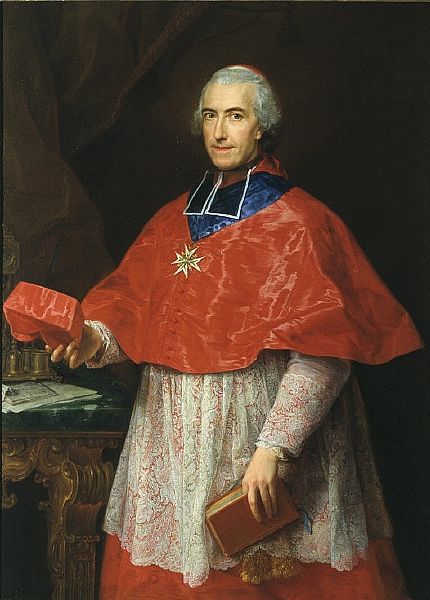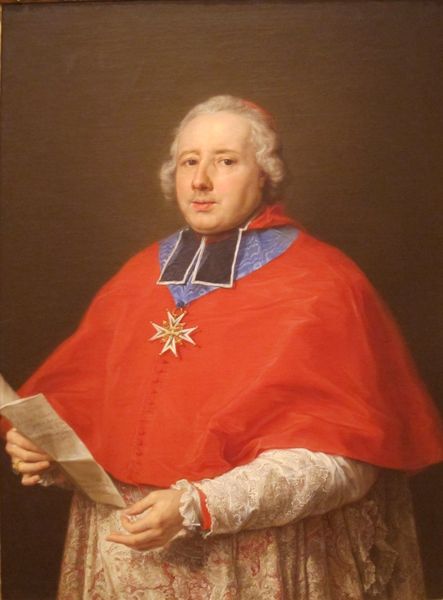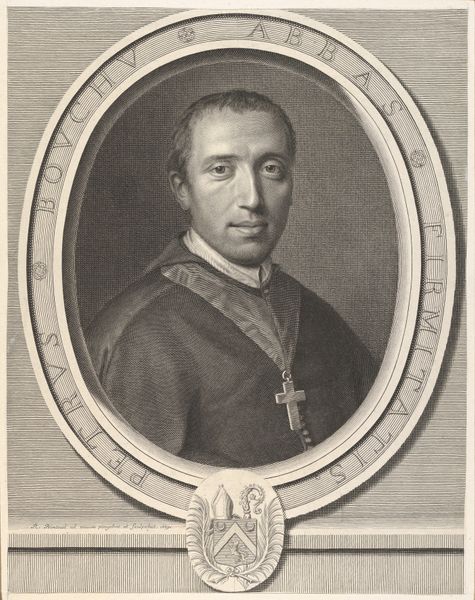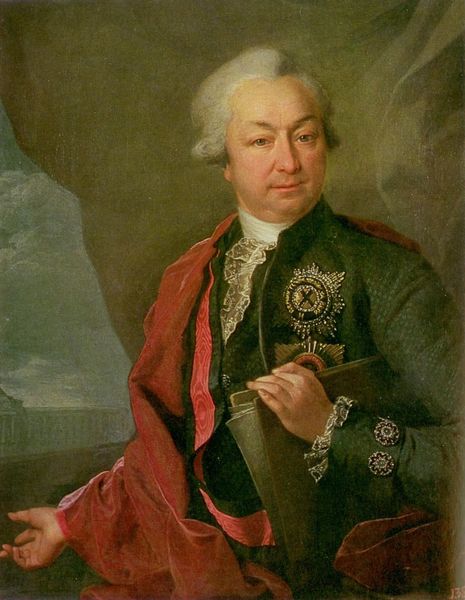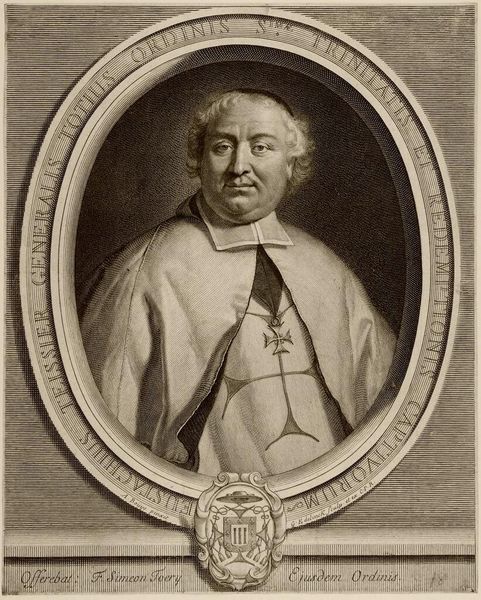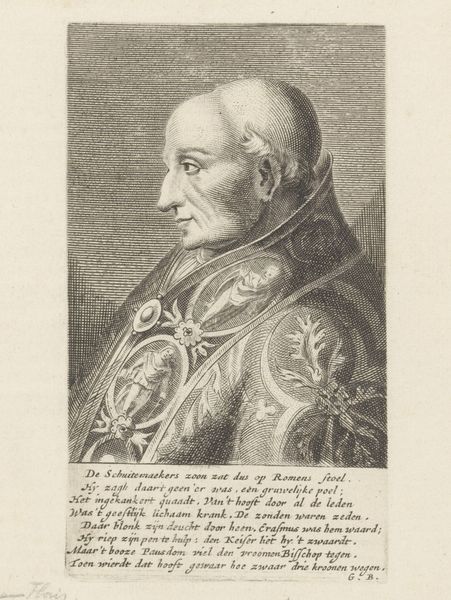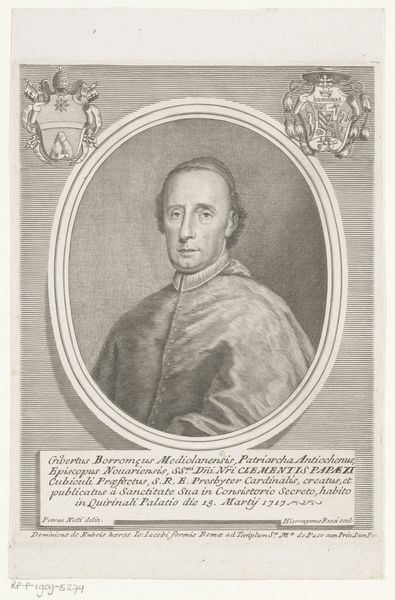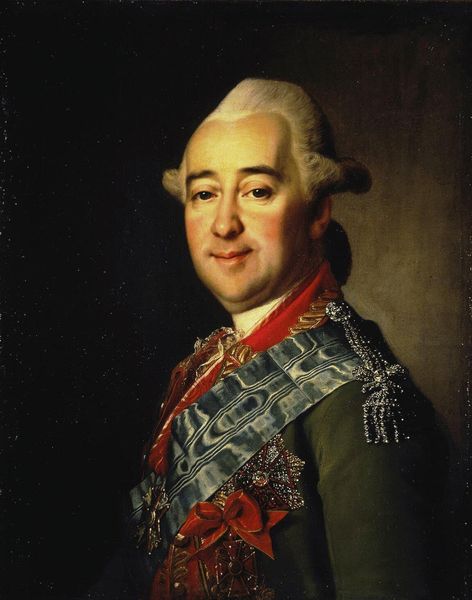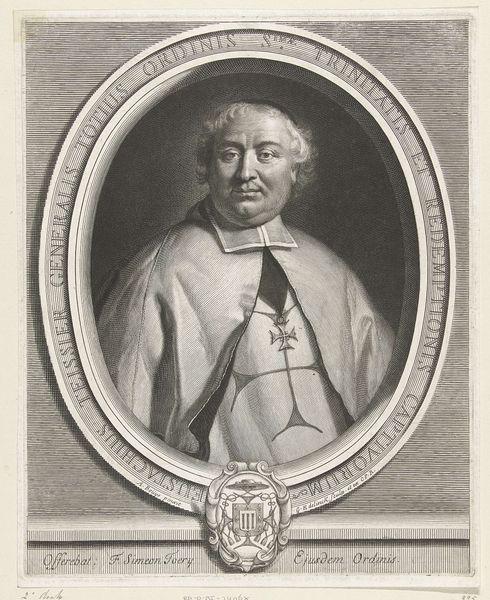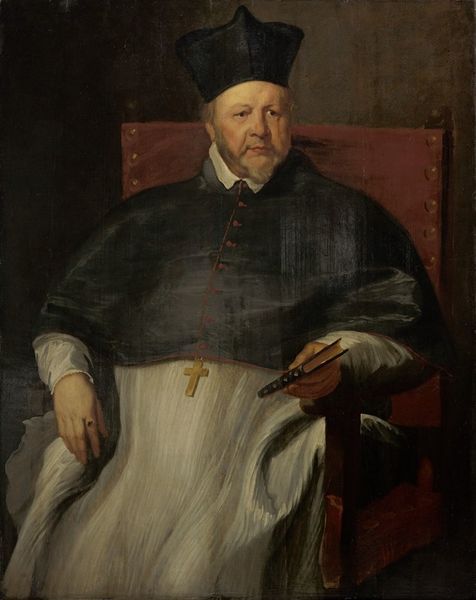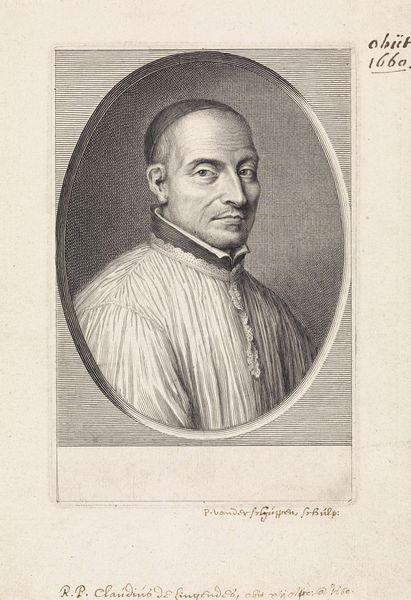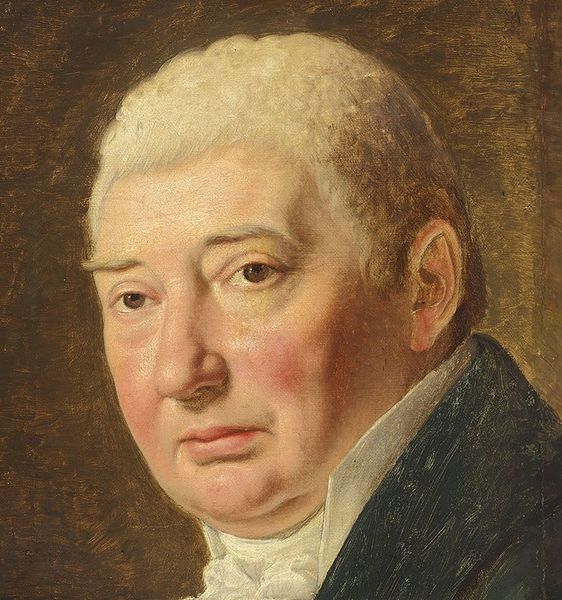
painting, oil-paint
#
portrait
#
baroque
#
painting
#
oil-paint
#
oil painting
Copyright: Public domain
Curator: Gazing upon this portrait by Pompeo Batoni, I find myself drawn to the textures. The fabric of the Archbishop's robe almost seems to shimmer. What are your immediate impressions? Editor: The light, yes. It lends an air of calm authority, almost serene. There’s something quite compelling in the subtle gradations of colour in his robes and in the contrast of those soft folds to the harder edges of his face. Curator: Absolutely. This work, entitled “Retrato Del Arzobispo De Lucca Giovanni Domenico Mansi,” places Mansi within a rich tradition of ecclesiastical portraiture. Do you see anything that speaks to his cultural significance through symbols? Editor: Beyond the obvious symbols like the cross and the vestments indicative of his station, I think his composed expression carries weight. This wasn’t merely about depicting an individual, but reinforcing the image of the Church. The portraits served very particular social purposes in reinforcing the Church. The image communicates stability. Curator: Yes, indeed. Notice how Batoni uses the oval format of the frame almost to idealize the face within? Consider, also, the weight this man carried, not only religiously, but politically during his life. Perhaps what we interpret as ‘calm’ is truly a carefully crafted portrayal of power. Editor: Certainly, Batoni had many prominent figures amongst his clientele, painting British aristocrats on the Grand Tour, for example. He was deeply embedded in that world of powerful elites and would have understood the language required to present them. The details of the clothing were not just about aesthetic beauty, but the socio-economic status conferred. Curator: Right, exactly. He’s presenting this archbishop not only as a holy man, but also as a pillar of societal order. In addition to all the portrait suggests about power, wealth, and order, for me, seeing this type of portrait brings to mind the grand sweep of cultural continuity, across generations of artists. Editor: Thinking about it, beyond just preserving likeness, artworks like these became instruments for navigating religious authority within social spheres. These aren't just depictions; they're statements of cultural identity and place in history. Curator: Absolutely. This portrait offers a nuanced window into not just one individual, but into the heart of an era. Editor: Yes, and these images remain today to pose questions about authority and representation.
Comments
No comments
Be the first to comment and join the conversation on the ultimate creative platform.
